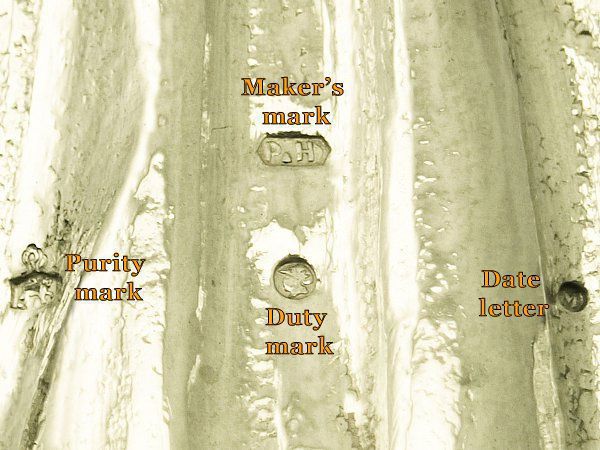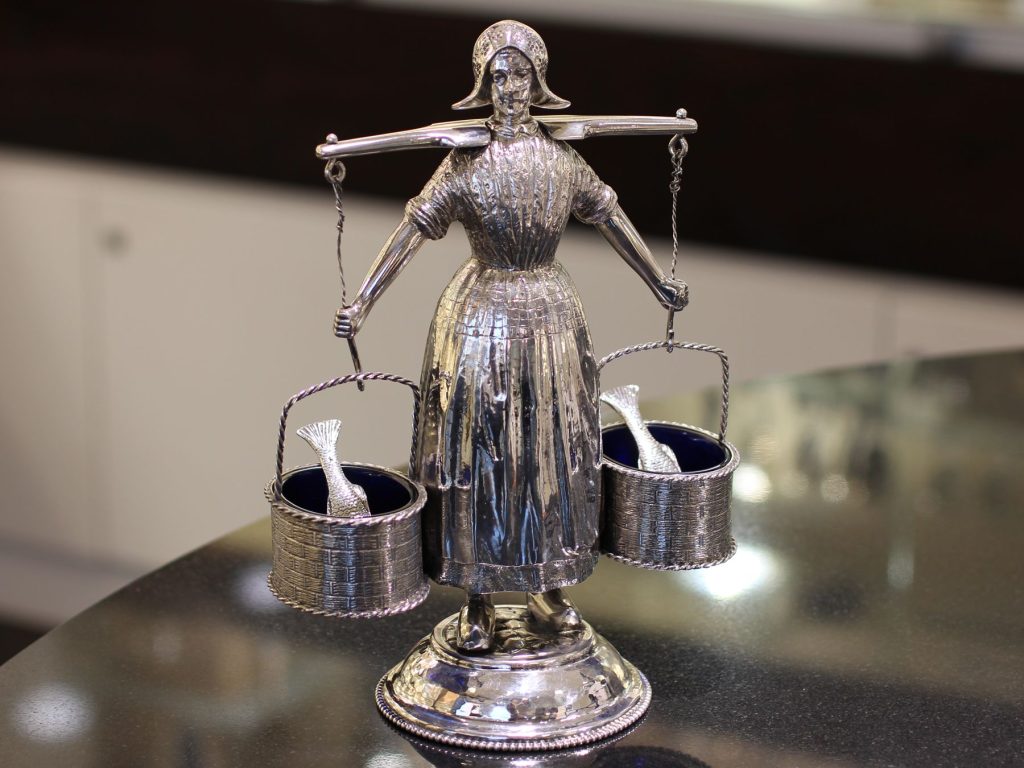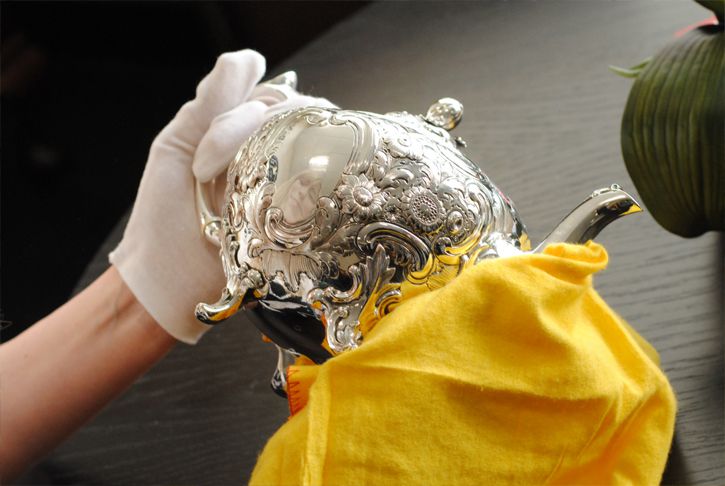As AC Silver’s silverware uploader I find a wide variety of items being placed on my desk and it is my task to search for hallmarks and other giveaway details to determine the era and origin of the piece in question. English sterling silver pieces tend to have a consistent location and spacing ratio depending on the style of the item, whereas examples of European silver are struck with hallmarks spread out and often incorporated into the decoration. A good search to find them all is frequently necessary, and often a fun game can be made of it.
But don’t take my word for it, here is some information about how to determine the basics of your Dutch piece:
The Arrival of Dutch Hallmarking
Hallmarking and date marking items of silver began in the Netherlands around 1503. This process was carried out under the supervision of local goldsmith and silversmith guilds. The process of hallmarking was taken up by the larger towns and cities, however there was no standardised system in place, therefore each town had its own system for this practice. It wasn’t until 1814 that a standard system was put in place so that everyone followed the same rules for hallmarking in the Netherlands.
Examining The Hallmarks
Lets look at the hallmarks …

Duty Mark
The duty mark on Dutch silver is present in the form of a Minerva head in side profile, wearing a helmet, imprinted with a letter. This letter tells you where the item was assayed. If you look very closely at Minerva head above you can see that there is a letter M in the helmet. This M tells us that this piece was assayed in Schoonhoven assay office.
Maker’s Mark
This is usually made up of two to three initials. You can refer to this Dutch silversmith search engine, although written in Dutch it is very easy to use, however I recommend translating it with Google translator https://www.zilver.nl/zilverkeuren
Date Letter
When it comes to establishing a date for the item of Dutch silver, this is similar to the date hallmarking process used by the British hallmarking system. Both of which have letters to represent the date the item was assayed. You can see from the image above the date letter is M (1922 in this case). Locating the date of an item of Dutch silver is often the most difficult process. Once found, the next task is to decide if the mark is struck upside down or not and then begin comparing the mark with date charts. It can be tricky but don’t give up!
Purity Mark
This mark is probably the easiest to spot when looking at Dutch silver and is always in the shape of a lion. The above purity mark shows a lion passant (the lion is in a walking pose with a front paw raised) and it is also accompanied by a number 2 at the bottom of the mark, this purity mark indicates the item is .833 purity silver. If you had a piece which had a lion rampant (lion standing on his hind legs with front paws raised) and the number one in the bottom right corner, this would tell you the item you were looking at was .935 purity silver, a higher purity than sterling silver, increasing the inherent value of the item.
In September 1953 the purity marks’ fineness changed slightly, with the lion passant becoming.835 standard and the lion rampant declaring the piece is at least .925/sterling standard.
Hallmarks vs Appearance
This is only a quick introduction the Dutch silver hallmarks system, which may seem a long winded practice, but once you grasp each individual mark’s meaning the additional information gleaned about a piece can be fascinating, and put it into historical context.
In the past I have been mistakenly influenced by the appearance of an article before I have examined the hallmarks; take a pair of German silver figural peppers for instance, which I naively presumed was Dutch due to the characters’ attire. Thankfully, with a little help from some complex German hallmarks, this misinterpretation was quickly put right.
So rule of the story: hallmarks never lie…(unless they are counterfeit, but that’s a story for another day).
Useful resources
Hallmarks https://www.925-1000.com/Fnetherlands_Date_Code.html






7 responses
I need help with a tea strainer and stand. It is of a milkmaid with a hallmark of what looks like a back to front B with an N or Z with E but not seperated. This mark can be seen on my left bucket when facing the strainer. Below the milkmaid is a jester and then the surrounds of the tea strainer is what looks like griffons and flowers.
For hallmark identification the following sites may provide an insight:
http://www.silvermakersmarks.co.uk
http://www.925-1000.com
http://www.silvercollection.it
I love all the info you give out, but how do I date Dutch pre 1814 silver ? Respect Clive
There is a wonderful book which can be used called “International Hallmarks on Silver Collected by Tardy”, however there is a website which utilises the gathered knowledge and displays examples of continental hallmarks, including pre 1814 Dutch: http://hallmarkwiki.com
Hello Rachel i have a sterling silver spoon with a bold E a left handed rampant lion with a crown above his head and a crown over three xxx. Im thinking this is around 1839 but unsure. It has a decorative handle depicting a man with a staff carrying a child with a cherub standing. Any ideas of the age and where it was made i think it may be dutch.
I’d like to know if you have any idea of the origin or meaning of the rampant lion with a crown, too, please!
This may help Mike https://www.acsilver.co.uk/shop/pc/British-English-Silver-Hallmarks-d84.htm